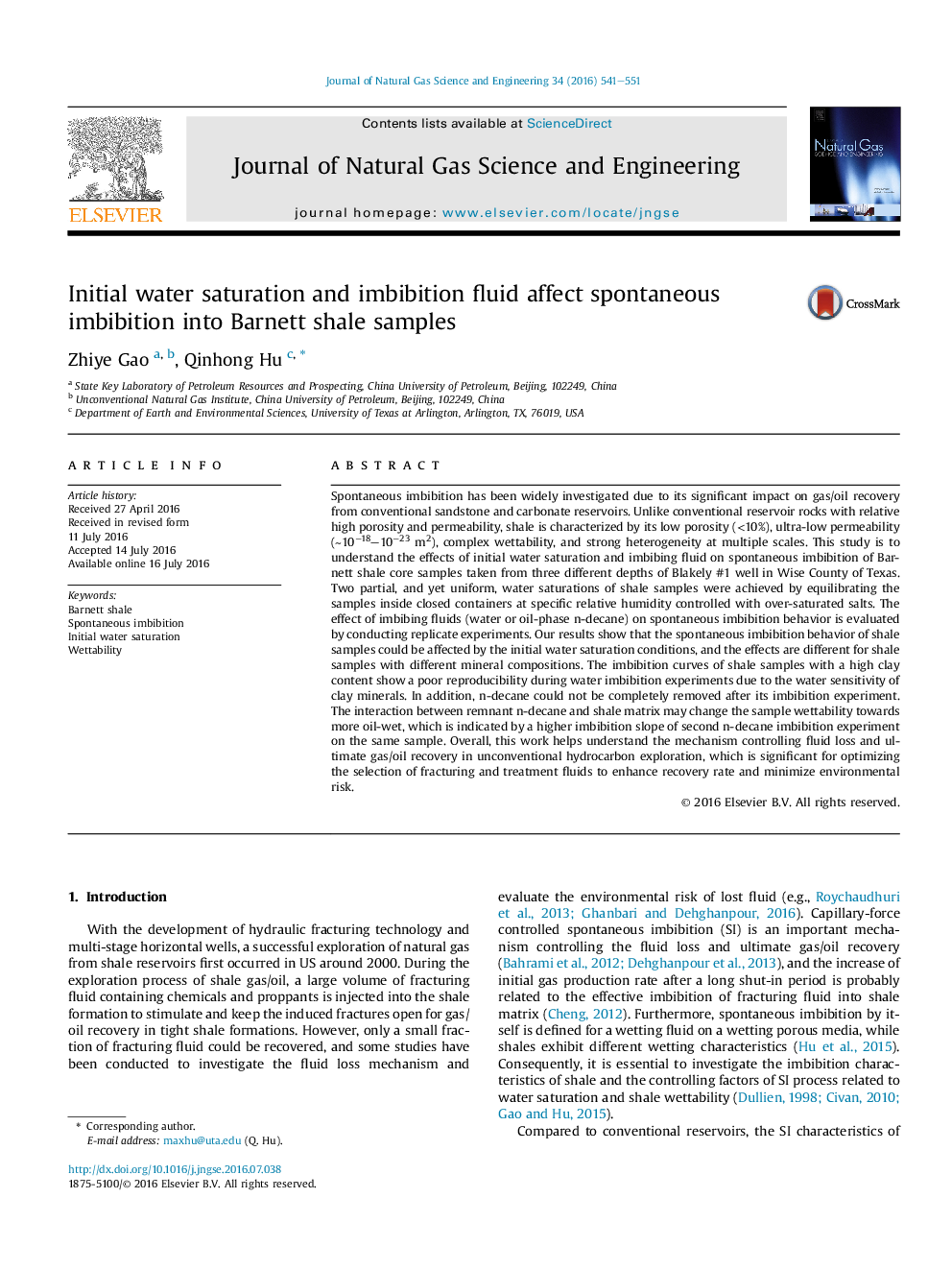| Article ID | Journal | Published Year | Pages | File Type |
|---|---|---|---|---|
| 8128704 | Journal of Natural Gas Science and Engineering | 2016 | 11 Pages |
Abstract
Spontaneous imbibition has been widely investigated due to its significant impact on gas/oil recovery from conventional sandstone and carbonate reservoirs. Unlike conventional reservoir rocks with relative high porosity and permeability, shale is characterized by its low porosity (<10%), ultra-low permeability (â¼10â18-10â23Â m2), complex wettability, and strong heterogeneity at multiple scales. This study is to understand the effects of initial water saturation and imbibing fluid on spontaneous imbibition of Barnett shale core samples taken from three different depths of Blakely #1 well in Wise County of Texas. Two partial, and yet uniform, water saturations of shale samples were achieved by equilibrating the samples inside closed containers at specific relative humidity controlled with over-saturated salts. The effect of imbibing fluids (water or oil-phase n-decane) on spontaneous imbibition behavior is evaluated by conducting replicate experiments. Our results show that the spontaneous imbibition behavior of shale samples could be affected by the initial water saturation conditions, and the effects are different for shale samples with different mineral compositions. The imbibition curves of shale samples with a high clay content show a poor reproducibility during water imbibition experiments due to the water sensitivity of clay minerals. In addition, n-decane could not be completely removed after its imbibition experiment. The interaction between remnant n-decane and shale matrix may change the sample wettability towards more oil-wet, which is indicated by a higher imbibition slope of second n-decane imbibition experiment on the same sample. Overall, this work helps understand the mechanism controlling fluid loss and ultimate gas/oil recovery in unconventional hydrocarbon exploration, which is significant for optimizing the selection of fracturing and treatment fluids to enhance recovery rate and minimize environmental risk.
Related Topics
Physical Sciences and Engineering
Earth and Planetary Sciences
Earth and Planetary Sciences (General)
Authors
Zhiye Gao, Qinhong Hu,
